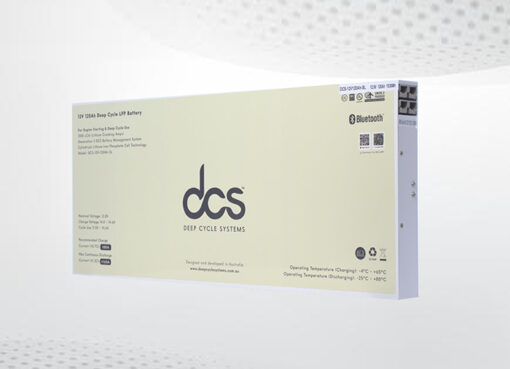How to Maintain and Troubleshoot Your Laser Tracker for Optimal Performance

Laser trackers are invaluable tools in precision measurement, enabling engineers and fabricators to achieve high levels of accuracy in their work. These sophisticated devices provide critical data for applications ranging from aerospace engineering to automotive manufacturing. To ensure that your laser tracker operates at its best, proper maintenance and troubleshooting are essential. In this blog, we’ll explore best practices for maintaining your laser tracker and offer troubleshooting tips to keep it performing optimally.
Understanding Your Laser Tracker
Before diving into maintenance and troubleshooting, it’s crucial to understand the basics of how laser trackers work. Laser trackers measure three-dimensional coordinates with exceptional precision by emitting a laser beam that reflects off a target. The device calculates the position of the target based on the time it takes for the laser to return and the angle of reflection. This technology provides real-time, accurate measurements crucial for various engineering and fabrication tasks.
Best Practices for Laser Tracker Maintenance
- Regular Cleaning
Keeping your laser tracker clean is essential for maintaining its performance. Dust, dirt, and other contaminants can affect the accuracy of measurements and the overall functionality of the device. Use a soft, lint-free cloth to gently wipe the exterior of the laser tracker and remove any dust or debris. For more thorough cleaning, follow the manufacturer’s guidelines on cleaning the optics and internal components.
Tip: Avoid using abrasive materials or harsh chemicals that could damage the device. Instead, use specialized cleaning solutions recommended by the manufacturer. - Routine Calibration
Calibration ensures that your laser tracker continues to provide accurate measurements. Regular calibration checks should be performed according to the manufacturer’s recommendations. Calibration involves comparing the laser tracker’s measurements with known standards and making adjustments as needed to correct any discrepancies.
Tip: Keep a log of calibration dates and results to track the device’s performance over time. This record will help you identify any trends or recurring issues that may need attention. - Check for Firmware Updates
Manufacturers periodically release firmware updates to improve the functionality and performance of laser trackers. Check for updates regularly and install them as instructed. Firmware updates can enhance the accuracy of measurements, add new features, and fix known issues.
Tip: Subscribe to the manufacturer’s newsletter or website updates to stay informed about the latest firmware releases and other important information. - Inspect Cables and Connections
Inspect the cables and connections of your laser tracker for signs of wear or damage. Ensure that all connections are secure and that there are no frayed or broken cables. Faulty cables or loose connections can lead to inaccurate measurements or intermittent device failures.
Tip: Use cable management solutions to keep cables organized and prevent accidental damage. Regularly check for any signs of wear or stress on the cables. - Monitor Environmental Conditions
Laser trackers are sensitive to environmental conditions such as temperature, humidity, and vibration. Ensure that the device is used in an environment that meets the manufacturer’s specifications. Extreme conditions can affect the accuracy and performance of the laser tracker.
Tip: Use environmental controls such as temperature and humidity regulators if your workspace experiences significant fluctuations. Additionally, place the laser tracker on a stable surface to minimize the effects of vibrations. - Perform Regular Functional Checks
Conduct regular functional checks to ensure that your laser tracker is operating correctly. This includes verifying that the device powers on, performs self-diagnostics, and completes routine measurement tasks without errors. Address any issues immediately to prevent more significant problems.
Tip: Create a checklist of functional tests to perform during each maintenance session. This routine will help you systematically verify that all aspects of the device are functioning as expected.
Troubleshooting Common Issues
- Inaccurate Measurements
If your laser tracker is providing inaccurate measurements, several factors could be at play. Common causes include misalignment of the device, dirty optics, or calibration issues.
Troubleshooting Steps:- Check Alignment: Ensure that the laser tracker is properly aligned and positioned according to the manufacturer’s guidelines.
- Clean Optics: Inspect and clean the optics if they appear dirty or obscured.
- Recalibrate: Perform a calibration check to ensure that the device is accurately measuring.
- Tip: Use known reference points or standards to verify the accuracy of measurements. This can help you identify whether the issue is with the device or the measurement environment.
- Device Not Powering On
If your laser tracker does not power on, the issue could be related to the power supply or internal components.
Troubleshooting Steps:- Check Power Supply: Ensure that the power source is working correctly and that all connections are secure.
- Inspect Cables: Verify that all power cables are intact and properly connected.
- Contact Support: If the issue persists, contact the manufacturer or a certified technician for further assistance.
- Tip: Always turn off the device and unplug it before inspecting internal components or connections to avoid electrical hazards.
- Communication Errors
Communication errors between the laser tracker and your computer or other equipment can disrupt your workflow. These errors are often related to software or connectivity issues.
Troubleshooting Steps:- Check Connections: Verify that all cables and connections between the laser tracker and your computer are secure.
- Restart Devices: Restart both the laser tracker and your computer to refresh the connection.
- Update Software: Ensure that you have the latest software and drivers installed for the laser tracker.
- Tip: Consult the user manual for specific troubleshooting steps related to communication errors. The manual may provide additional guidance or solutions for common connectivity issues.
- Unresponsive or Slow Performance
If your laser tracker is unresponsive or experiencing slow performance, the issue could be related to software, hardware, or environmental factors.
Troubleshooting Steps:- Restart the Device: Power off the laser tracker and restart it to clear any temporary issues.
- Check for Interference: Ensure that there are no sources of interference, such as other electronic devices or reflective surfaces, affecting the performance.
- Contact Support: If the problem persists, seek assistance from the manufacturer or a qualified technician.
- Tip: Regularly update the device’s software and firmware to ensure optimal performance and address any known issues.
- Error Messages
Laser trackers may display error messages that indicate specific issues or malfunctions. Refer to the user manual or error code documentation for guidance on resolving these issues.
Troubleshooting Steps:- Consult the Manual: Refer to the user manual for detailed information about the error message and recommended solutions.
- Perform Diagnostics: Use built-in diagnostic tools to identify and address the cause of the error.
- Seek Professional Help: If you cannot resolve the issue on your own, contact the manufacturer or a certified technician for assistance.
- Tip: Keep a record of any error messages and the steps taken to resolve them. This documentation can be useful for troubleshooting similar issues in the future.
Conclusion
Maintaining and troubleshooting your laser tracker is essential for ensuring its optimal performance and accuracy. By following best practices for cleaning, calibration, and regular checks, you can keep your laser tracker in excellent condition and avoid common issues. When problems arise, systematic troubleshooting and seeking professional assistance when needed will help you address issues effectively and maintain the high performance of your laser tracker.
Investing time in proper maintenance and troubleshooting will enhance the reliability of your laser tracker, allowing you to achieve precise measurements and successful outcomes in your engineering and fabrication projects. With a well-maintained laser tracker, you can continue to benefit from its advanced measurement capabilities and ensure that your work meets the highest standards of accuracy and quality.




Leave a Comment